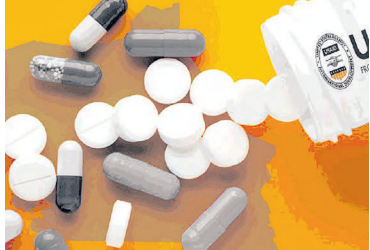
 THE STAR ILLUSTRATION
THE STAR ILLUSTRATION
Over 81 countries, including Kenya, have already requested the World Health Organization for help due to the abrupt withdrawal of funding by the US government.
In Kenya, donor funding is typically around 25 per cent of the total health expenditure.
The health sector relies heavily on a few key donors, with four contributing nearly 90 per cent of external aid, including the United States, the Global Fund (GF), the UK and Gavi.
The US, GF and Gavi finance nearly all budgets for the top three diseases in Kenya – HIV, TB and malaria.
In a new rapid assessment released this week, the WHO reports that 70 per cent of its country offices have observed significant disruptions to health services after the US withdrawal.
The report, based on a survey conducted from March to April 2025, primarily covered low- and lower-middle-income countries, including many in sub-Saharan Africa.
“These results paint a worrying picture about the impact of the sudden and unplanned cuts to aid on the health of millions of people,” said Dr Tedros Ghebreyesus, WHO director-general.
“Although these cuts are a shock, they are also driving an accelerated transition away from aid dependency to a more sustainable self-reliance, based on domestic resources. Many countries are asking for WHO’s support and WHO is working with them to identify and tailor the most effective measures.”
Eighty one of the 108 WHO country offices surveyed have requested urgent support across a range of areas, including innovative funding, resource mobilisation and technical assistance, the organisation said.
Countries are scrambling to reallocate domestic resources or seek alternative external funding to plug the gaps left by reduced donor support.
For instance, Kenya is using domestic resources to distribute HIV drugs following the suspension of USAID funds and a stop-work order by the US government.
But for many, this is proving inadequate. In nearly a quarter of countries surveyed, the budget cuts are pushing more costs onto individuals, leading to increased out-of-pocket payments for essential health services.
WHO warns that the poor and vulnerable are likely to be hardest hit.
“The impacts are being felt across all key areas of healthcare. The most commonly disrupted services include health emergency preparedness and response (70 per cent), public health surveillance (66 per cent), service provision (58 per cent), humanitarian aid (56 per cent) and the health workforce (54 per cent),” WHO said.
Alarmingly, health services in at least one-third of the affected countries are experiencing disruptions similar in scale to those seen during the worst periods of the Covid-19 pandemic.
This includes critical services such as outbreak detection and response, malaria, HIV, tuberculosis, sexually transmitted infections, family planning and maternal and child health services.
The report further reveals that one-third of the countries surveyed now face severe shortages of medicines and essential health products.
More than half have reported job losses among health and care workers, alongside major disruptions to their training.
Key health information systems have also taken a hit. Over 40 per cent of countries are struggling with disrupted data systems, including emergency surveillance, health management information systems, lab reporting and household surveys—vital tools for guiding public health action.
The WHO will continue to monitor the evolving situation and engage global health partners and donor agencies to coordinate urgent response plans aimed at mitigating the impacts and enabling countries to develop more sustainable systems.
“These findings represent a snapshot of the health systems and health services situation in the context of a rapidly evolving situation,” WHO noted, adding that the data were collected from senior staff across all six WHO regions.












